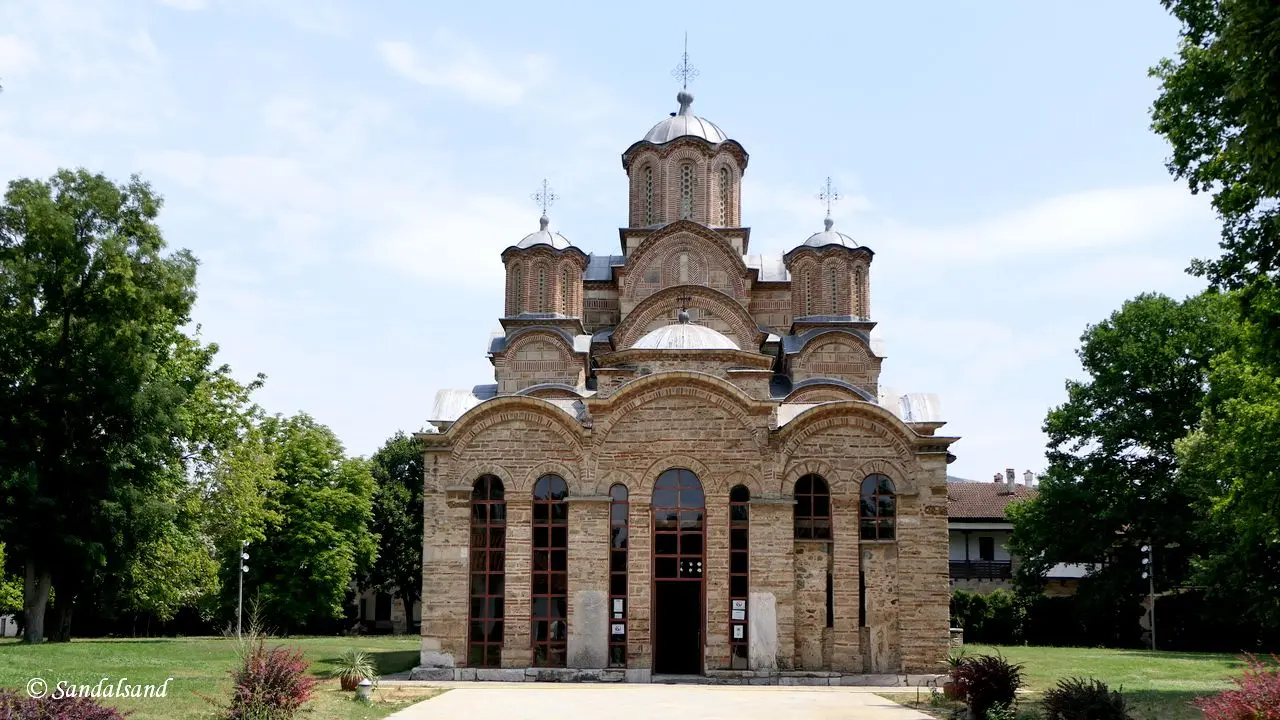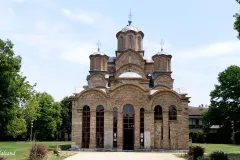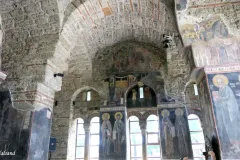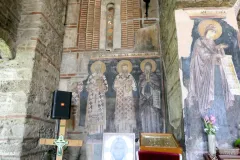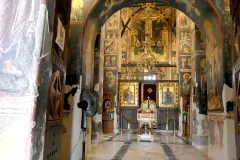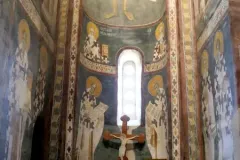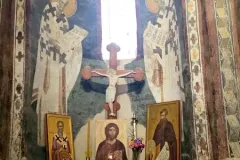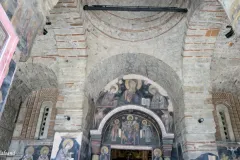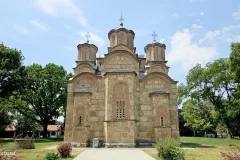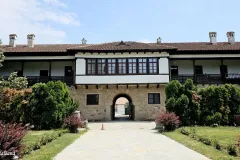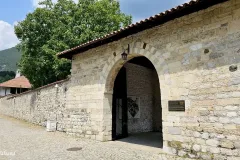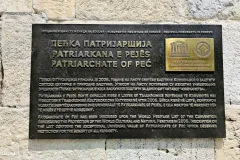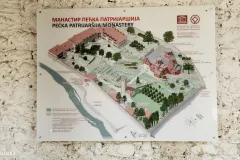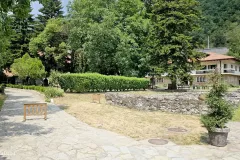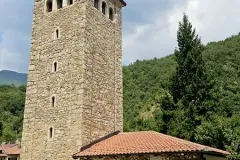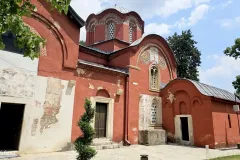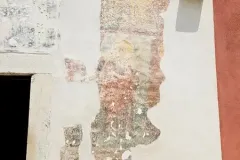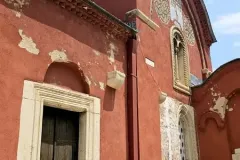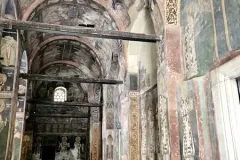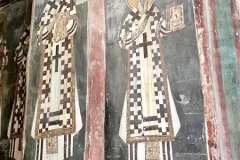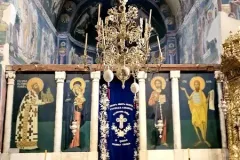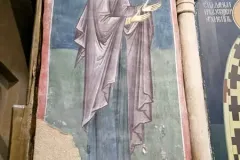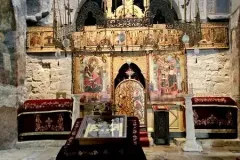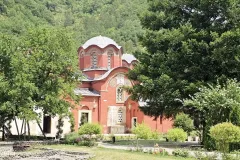Kosovo’s medieval monuments are monasteries where Byzantine art, royal heritage, and centuries of faith meet in stone and fresco.
The UNESCO World Heritage List includes over a thousand properties. They have outstanding universal value and are all part of the world’s cultural and natural heritage.
Official facts
- Official title: Medieval Monuments in Kosovo
- Countries: Serbia (Kosovo claims independence, but is not recognised by UNESCO)
- Date of Inscription: 2004. Significant modifications to the boundaries in 2006
- Category: Cultural
UNESCO’s World Heritage Centre’s short description of site no. 724:
The four edifices of the site reflect the high points of the Byzantine-Romanesque ecclesiastical culture, with its distinct style of wall painting, which developed in the Balkans between the 13th and 17th centuries. The Dečani Monastery was built in the mid-14th century for the Serbian king Stefan Dečanski and is also his mausoleum. The Patriarchate of Peć Monastery is a group of four domed churches featuring series of wall paintings.
The 13th-century frescoes of the Church of Holy Apostles are painted in a unique, monumental style. Early 14th-century frescoes in the church of the Holy Virgin of Ljevisa represent the appearance of the new so-called Palaiologian Renaissance style, combining the influences of the eastern Orthodox Byzantine and the Western Romanesque traditions. The style played a decisive role in subsequent Balkan art.
The significance of churches
Witnesses of a medieval kingdom
Kosovo’s medieval monuments represent the artistic and spiritual height of the Serbian medieval state. This World Heritage property includes four major sites: the Dečani Monastery, the Patriarchate of Peć, Gračanica Monastery, and the Church of the Virgin of Ljeviša in Prizren. Together, they showcase a unique blend of Byzantine and Western architectural traditions that flourished in the Balkans during the 13th and 14th centuries.
The Dečani Monastery was the first enlisted property in 2004. The three others followed in 2006.
Art and faith in stone and fresco
Built under royal patronage, these monuments reflect the cultural achievements of the Nemanjić dynasty. Their frescoes, considered masterpieces of Byzantine art, illustrate biblical scenes with vivid expression and refined technique. The Dečani Monastery, in particular, stands out for its harmonious proportions and exceptional preservation.
Heritage and continuity
UNESCO inscribed the Medieval Monuments in Kosovo in 2004 and 2006 for their outstanding universal value as symbols of faith, culture, and artistic innovation. Despite periods of conflict and damage, these sacred sites continue to serve as places of worship and identity. They remain powerful reminders of the region’s rich medieval heritage and its enduring spiritual legacy.
My visits
That said, Kosovo’s medieval monuments are also reminders of the long-standing Serbian rule of Kosovo. The monasteries are of Christian faith, a religion and a culture which has become a minority amidst a predominantly Kosovo-Albanian and Muslim population. In addition Kosovo’s unilateral declaration of independence in 2008, backed by Western powers and supported by the United Nations, meant that this heritage property in essence was removed from Serbia.
Serbia contests Kosovo’s independence, and recognises Kosovo only as an autonomous region within itself. However, the majority of the world’s countries now recognise Kosovo’s independence. But not the United Nations as such. Therefore UNESCO lists this property under Serbia. (Sandalsand “recognises” Kosovo and use both countries in this post.)
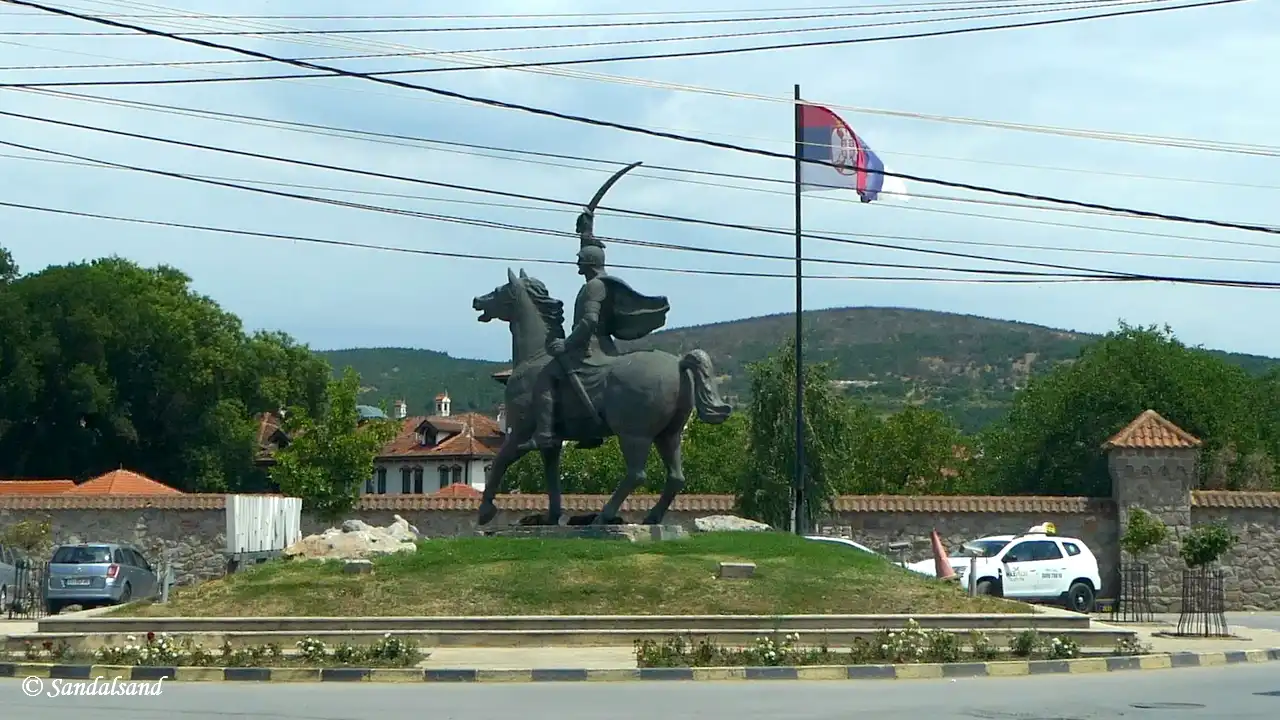
Tensions between the countries remain high, more than two decades after the bloody wars of the 1990’s. UNESCO has since 2006 kept this heritage on their List of World Heritage in Danger. The reasons are difficulties in its management and conservation stemming from the region’s political instability.
This also means that the monasteries, central in Serbian national history and culture, are not within easy reach of Serbians. That is, there as still Serbians living in Kosovo and who quite literally flag their allegiance to their (home) country.
Serbian flags adorned houses on the street outside the first monastery I visited, as well as this nearby roundabout (click to enlarge). The statue is of Miloš Obilić, a legendary Serbian knight in the late 14th century and saint in the Serbian Orthodox Church.
I made it to two of the four monasteries on a visit to Kosovo in 2025.
First, the Gračanica Monastery
The Gračanica Monastery, located near Pristina, is a fine example of late Byzantine architecture. Built in 1321 by Serbian King Stefan Milutin, it is dedicated to the Annunciation. The church’s elegant five-domed structure and exceptional frescoes illustrate a pinnacle of medieval Serbian art. Today, Gračanica remains an active Serbian Orthodox convent and a spiritual centre for Kosovo’s Serbian community.
The large walled compound features the active convent buildings opposite the narrow entrance gate. At its centre stands the church, offering a deeply moving experience. Though some frescoes bear scratches and areas of plaster have deteriorated, the interior still radiates spirituality and tranquillity. Entry to the monastery is free.
Second, the Patriarchate of Peć
The Patriarchate of Peć, located near Peć (Peja) in western Kosovo, is another of the most significant spiritual and historical centres of the Serbian Orthodox Church. Established in the 13th century, it served as the seat of the Serbian archbishops and patriarchs for centuries. The complex consists of several interconnected churches adorned with magnificent frescoes that reflect the evolution of Serbian medieval art. Surrounded by the dramatic mountain scenery of the Rugova canyon, the monastery remains a living convent and an enduring symbol of Serbian faith and identity.
As Gračanica, this monastery radiates tranquillity. The setting is superb, as is the large park-like garden inside the walled compound. Three or four churches joins together as one. They all have beautiful fresco paintings on the walls and ceiling. The exterior differentiates it from Gračanica in the sense that the walls are plastered and painted red.
The monastery is easy to find and reach if you possess your own vehicle. it is free to enter. In any case, you should continue into the narrow canyon for a monumental experience of another kind.

